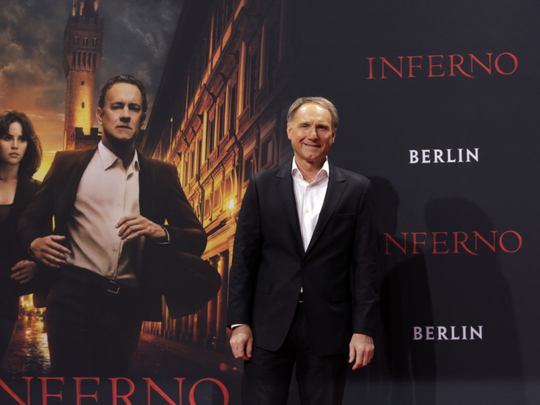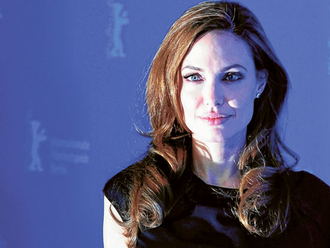
A decade or so ago, the Church of Saint-Sulpice in Paris became the first beneficiary of the so-called “Dan Brown effect”.
Shortly after the publication of The Da Vinci Code, the second of Brown’s Robert Langdon thrillers, wide-eyed tourists began to arrive there clutching copies of the book. Soon after, church administrators fixed a small, curt sign to the wall. “Contrary to fanciful allegations in a recent best-selling novel, this is not a vestige of a pagan temple,” it read. “Please also note that the letters ‘P’ and ‘S’ in the small round windows at both ends of the transept refer to Peter and Sulpice, the patron saints of the church, and not an imaginary ‘Priory of Sion’.”
Needless to say, when director Ron Howard came to make a film of the book in 2005, the church’s doors remained firmly bolted shut. For the Vatican, meanwhile, the suggestion that Jesus and Mary Magdalene might have had a child together was a fantasy too far: when Howard made Angels & Demons, the second Langdon film, he was forced to recreate St Peter’s using CGI. But in Florence, a city that has always valued a healthy bottom line, the story has unfolded quite differently.
On a blazingly hot spring day, Brown, a neat, affable 52-year-old, is holding court in the Pitti Palace. The corridors are filled with kit: the palace is playing host to the cast and crew of Inferno, the latest of Brown’s books to be turned into a film.
“It’s funny,” he says, “I have beautiful coffee-table books that have been sent to me from every country in the world. Visit Andorra! Visit Japan! But I knew Florence and I knew, once I started writing books, that I would some day write about Dante.”
In Brown’s hands, it should be noted, The Divine Comedy is reduced to an infernal crossword puzzle: the epic poem (of which Inferno is the first part) is a source of clues as to the intentions of a billionaire bioterrorist — and Dante aficionado — bent on curbing the world’s population.
Fortunately, Robert Langdon, Harvard’s resident specialist in the (fictional) discipline of symbology, is on the case. “This is my job,” says Brown. “To take a ton of science, some sort of ethical dilemma — should we kill half the people on Earth to save the human race, a question like that — and then fold in this whole world of art and architecture and history, and balance that so, literally on every page, you’re touching something of each of those.”
From the courtyard below comes the insistent sound of a drone, which earlier that day had been chasing Tom Hanks and his co-star Felicity Jones through the Boboli Gardens. This is the third time Hanks will slip into Langdon’s Harris tweeds but, as is Brown’s wont, there’s a twist.
At the beginning of the film, Langdon awakes in hospital with a nasty head injury and a mild case of amnesia; before he’s even worked out which city he’s in, a leather-clad assassin is shooting at him.
“Dan Brown reinvented the wheel in Inferno,” says Hanks. “Langdon doesn’t have the facility he has in the other films because his head is not quite working right. It’s a more hairy acting experience: I don’t get to be as cool and suave and knowledgeable as the Langdon of the previous two films.”
As in the earlier instalments, Langdon can call upon the assistance of a beautiful young sidekick. English actress Jones plays Sienna Brooks, a doctor with an IQ of 208. (Not bad considering Stephen Hawking only scraped 160.)
“There’s a bit of pressure, playing someone like Sienna,” she says. “I went to an ER unit in New York and spent some time with a young woman who works there. These people work under incredible pressure, they make decisions very, very quickly and obviously they’re making life or death decisions.”
Everywhere on set, Brown’s work is treated with utmost seriousness. Never mind that Langdon is a man who opens a lecture at the Viennese Academy of Sciences with the words: “Wilkommen, bienvenue, welcome.” (“The famous line from Cabaret drew appreciative laughter from the crowd,” adds Brown.)
Brown’s books are essentially critic-proof — he’s sold more than 200 million copies of his Langdon series worldwide, despite bad reviews — and a similar glow of invulnerability surrounds the films.
The Da Vinci Code, which has a score of 25 per cent on film review website Rotten Tomatoes, made $750 million (Dh2.75 billion), while Angels & Demons (holding fast at 37 per cent) took $500 million.
“I share Robert Langdon’s fascination with history,” says Ron Howard. Howard is both director and producer of Inferno, which perhaps accounts for his slightly distracted air; in baseball cap and sturdy New Balance trainers, he could easily be mistaken for a tourist who’s taken a wrong turn.
“Although sadly I don’t share his IQ.” Howard’s aim is to make this latest film a “modern psychological thriller”.
The pace is frenetic — “Yesterday I took 25,000 steps,” says Howard, glancing at his pedometer — and the logistics are complex.
It’s high season for tourism, and the film-makers require the use of some of Florence’s most popular sightseeing locations, including the Baptistery and the Palazzo Vecchio. Aptly enough, the production is code-named “Headache”.
It’s been a few years since a big Hollywood production came to town.
“The last was Hannibal, a long time ago,” says Maria, one of Florence’s many tour guides. “And do you know the TV show Jersey Shore? They came here two, three years ago. Lots of cameras, but nobody knew who they were.”
No one here seems to mind Brown’s occasional inaccuracies — “poetic licence,” says Maria, forgivingly — nor that he’s overlaid the city’s history with an impasto of conspiratorial nonsense. They don’t even disagree with his decision to subject the Piazza della Signoria, where a replica of Michelangelo’s David stands, to a penis count (conclusion: “Despite its overabundance of phalluses, [it] had always been one of his favourite plazas in all of Europe”).
In fact, Inferno-inspired tours are already big business, with tourists paying up to $100 to be guided around the sites Langdon dashes past in the book. There are equivalent tours in Venice and Istanbul, the other main locations for both book and film.
Everywhere you go, it seems, people want to see the world through Brown’s paranoiac lens. “With The Da Vinci Code, I wrote the right book at the right moment, just by chance,” the writer says. “If it came out now, or 30 years ago, I don’t know if it would have had the same success. But it came out at a time when people were questioning the church, questioning authority, and looking for another answer.”
He has long since made peace with bad reviews. “Everybody has different taste, and that’s a great thing,” he says. “Some critics love what I do, some critics hate what I do, same with the readers. At some point you realise, I’ll just write the books I want to read, and hope people share my taste.”
In Italy, too, they regard the fortunes of his latest project with equanimity. The book has already cast its spell and, as Maria says: “Everyone comes to Florence anyway.”












